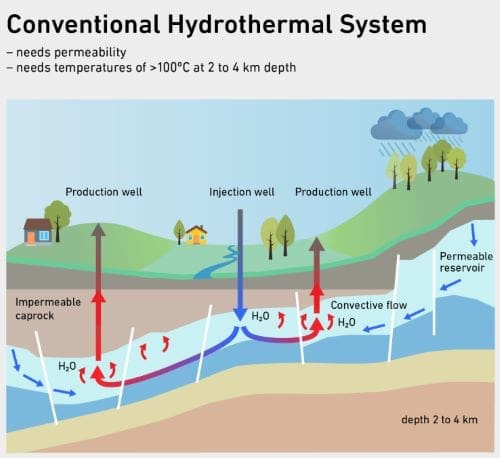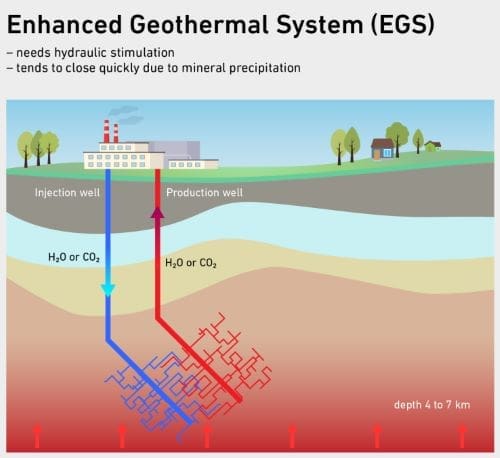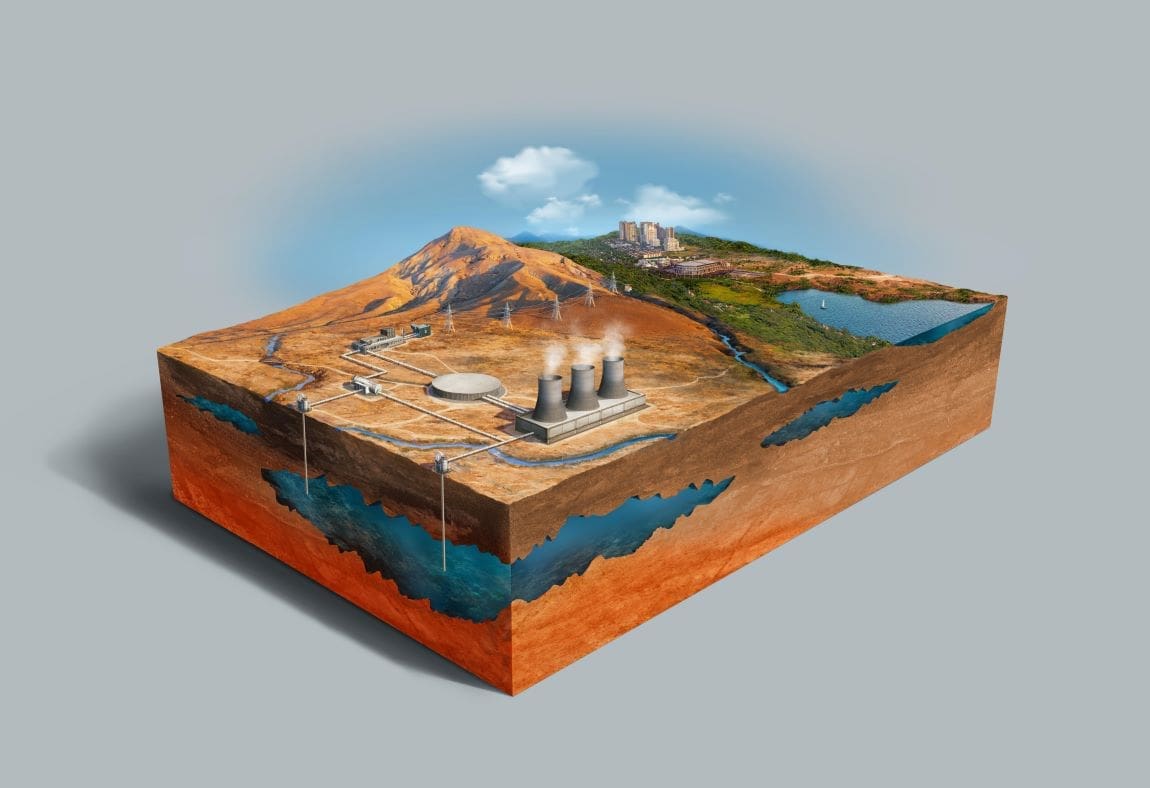Deep underground lies a largely untapped source of carbon-neutral energy that holds immense potential: geothermal heat.
Compact, consistent, and environmentally friendly, it promises energy independence for countries like Switzerland. However, tapping into this resource has long been challenged by the risk of induced seismicity. With advanced monitoring technologies and innovative systems, researchers at ETH Zurich are paving the way for safer, more efficient geothermal energy.
While shallow geothermal systems are commonly used for heating, Switzerland’s deep geothermal projects are still in their infancy. These initiatives are now gaining traction, thanks to breakthroughs at ETH Zurich that address challenges such as high drilling costs, rock permeability, and earthquake risk.
Making geothermal systems safer
Enhanced Geothermal Systems (EGS) rely on hydraulic stimulation to create fractures in deep rock formations. Water is then circulated through these fractures to extract heat for energy production. However, this method has been controversial due to its potential to trigger earthquakes, as seen in Basel in 2006. To tackle this, researchers at ETH’s BedrettoLab are refining methods to make EGS safer.
Led by Stefan Wiemer, Director of the Swiss Seismological Service (SED), scientists are focusing on small, controlled stimulations in isolated borehole zones to create fractures. Advanced machine learning models are employed to predict seismic activity and adjust operations in real-time. “Today, we have very good control mechanisms,” explains Wiemer. “This is thanks to improved data collection and the ability of AI to process enormous volumes of data in real-time. That allows us to better understand and minimise risks, although we cannot exclude them altogether.”


These findings are already informing the pilot geothermal power plant in the commune of Haute-Sorne, where ETH researchers are closely monitoring seismic activity to ensure safe operations.
A closed loop for clean energy
Innovations in geothermal systems could also revolutionize the way energy is harnessed. Martin Saar, a professor of Geothermal Energy and Geofluids at ETH Zurich, has proposed a groundbreaking alternative: closed-loop Advanced Geothermal Systems (AGS) that circulate CO₂ instead of water.
In these systems, CO₂ is injected into deep pipes where it heats, expands, and rises to drive turbines. Unlike traditional methods, AGS minimizes earthquake risks while doubling or tripling electricity output.
“In view of the increasing demand for electricity in winter, AGS could offer an environmentally friendly alternative to the carbon-intensive gas-fired reserve power plants which are currently being talked about,” says Saar.
Despite high upfront costs for drilling, researchers are exploring advanced drilling techniques, such as microwaves and lightning, to reduce expenses.
Using geothermal energy for heat storage
Geothermal energy isn’t just about electricity. Medium-depth geothermal systems can also be used to store heat underground during summer and retrieve it in winter – a solution particularly relevant to Switzerland, which remains heavily reliant on imported gas for heating.
According to researcher Maren Brehme, this approach has been successful in other countries like the Netherlands and could be adapted to Swiss geological conditions. Her team is working to overcome challenges such as limited data on the subsurface and high drilling costs.
“Switzerland hardly has oil or gas deposits. Because of that, the subsurface has never been investigated as thoroughly as in other countries. We have to plug these gaps in our knowledge,” Brehme explains.
At the BedrettoLab, scientists are also investigating how to store heat in crystalline rock, a technique that could make geothermal systems even more versatile.
Geothermal energy is gaining public support in Switzerland, with regulatory hurdles easing and insurers beginning to offer coverage for drilling risks. Meanwhile, collaborations like the CPG Consortium – founded by Saar in 2023 – are accelerating the development of innovative geothermal technologies. By combining heat storage, electricity generation, and carbon capture, these systems could redefine how renewable energy is produced and utilized.
With improving technologies and falling costs, geothermal energy offers Switzerland an opportunity to secure a sustainable and independent energy future.
Article Source:
Press Release/Material by Eidgenössische Technische Hochschule Zürich (ETH Zürich)
Featured image credit: Freepik




